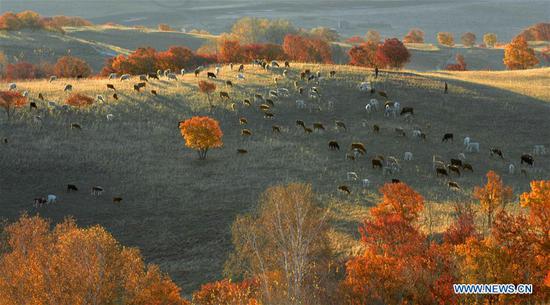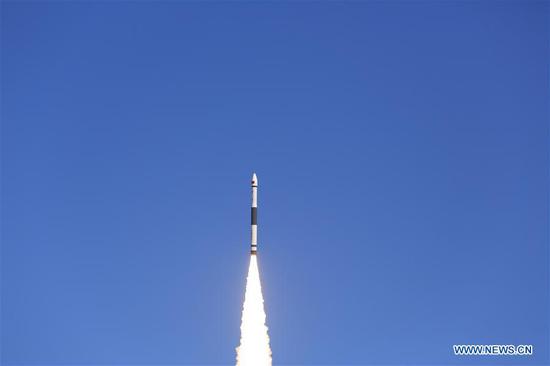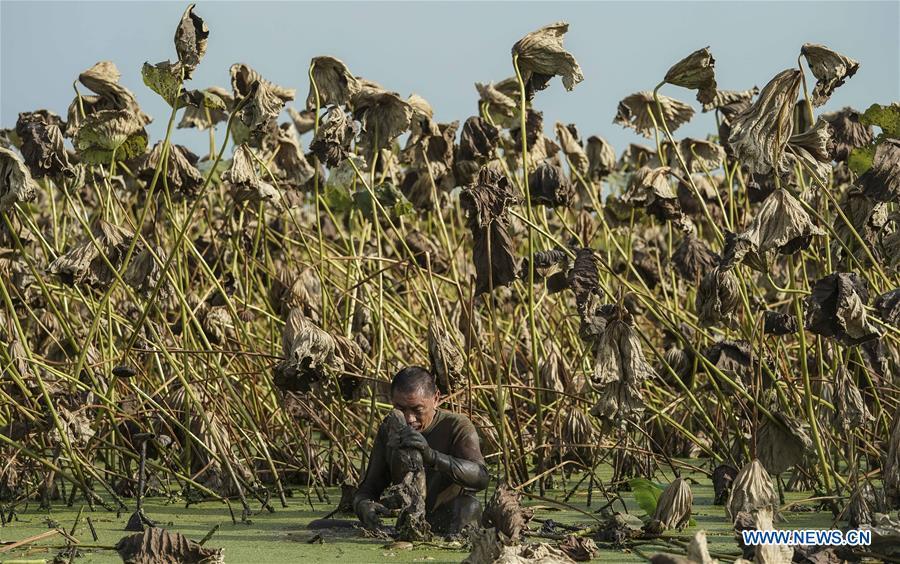
A worker digs lotus roots in Wudang Village of Jiangxia District in Wuhan, central China's Hubei Province, Sept. 18, 2018. In Hubei Province, this year's autumn harvest of lotus roots is underway. Stooping down in waist-deep ponds with feet submerged in mud, each worker holds a high-pressure water gun in one hand and grope for ripe lotus roots with another. The lotus root is one of the most widely used aquatic vegetables in Chinese cooking. The total cultivation area of lotus roots in China is estimated between 3,300 and 4,000 square kilometers, making the country the largest lotus root producer in the world. In recent years, agricultural researchers in Hubei Province have cultivated and promoted new varieties of lotus roots to offer alternatives to producers and customers. (Xinhua/Yin Gang)
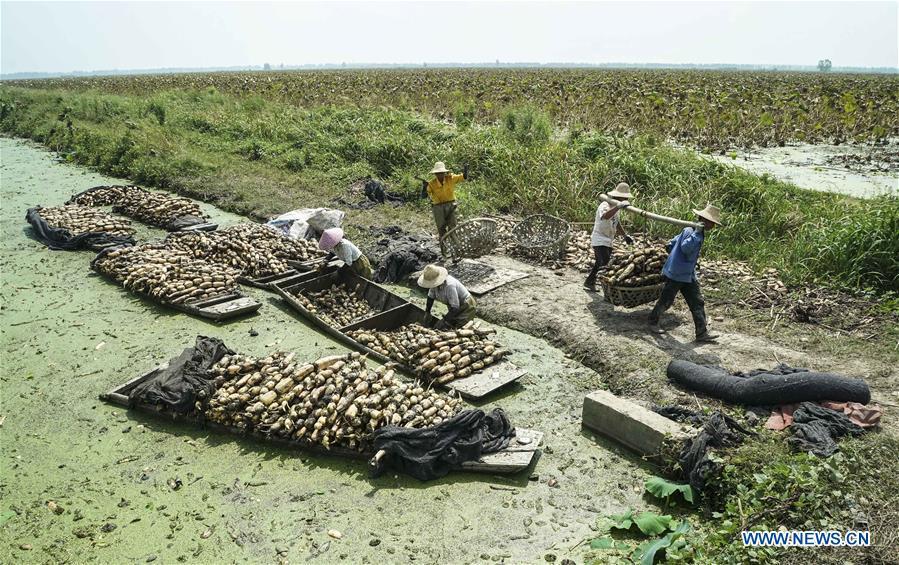
Workers carry harvested lotus roots in Chenhu Township of Hanchuan, central China's Hubei Province, Sept. 19, 2018. In Hubei Province, this year's autumn harvest of lotus roots is underway. Stooping down in waist-deep ponds with feet submerged in mud, each worker holds a high-pressure water gun in one hand and grope for ripe lotus roots with another. The lotus root is one of the most widely used aquatic vegetables in Chinese cooking. The total cultivation area of lotus roots in China is estimated between 3,300 and 4,000 square kilometers, making the country the largest lotus root producer in the world. In recent years, agricultural researchers in Hubei Province have cultivated and promoted new varieties of lotus roots to offer alternatives to producers and customers. (Xinhua/Yin Gang)
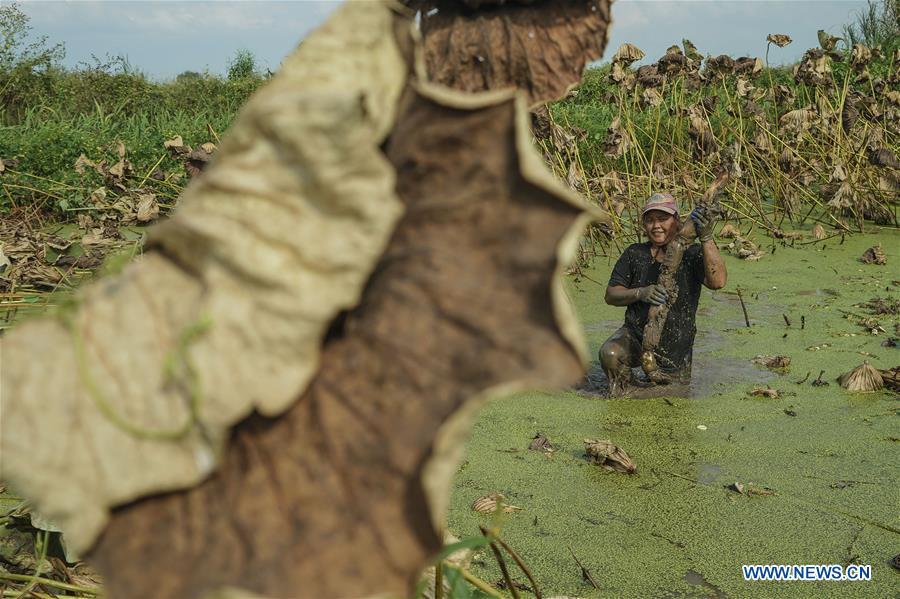
A worker digs lotus roots in Wudang Village of Jiangxia District in Wuhan, central China's Hubei Province, Sept. 18, 2018. In Hubei Province, this year's autumn harvest of lotus roots is underway. Stooping down in waist-deep ponds with feet submerged in mud, each worker holds a high-pressure water gun in one hand and grope for ripe lotus roots with another. The lotus root is one of the most widely used aquatic vegetables in Chinese cooking. The total cultivation area of lotus roots in China is estimated between 3,300 and 4,000 square kilometers, making the country the largest lotus root producer in the world. In recent years, agricultural researchers in Hubei Province have cultivated and promoted new varieties of lotus roots to offer alternatives to producers and customers. (Xinhua/Yin Gang)
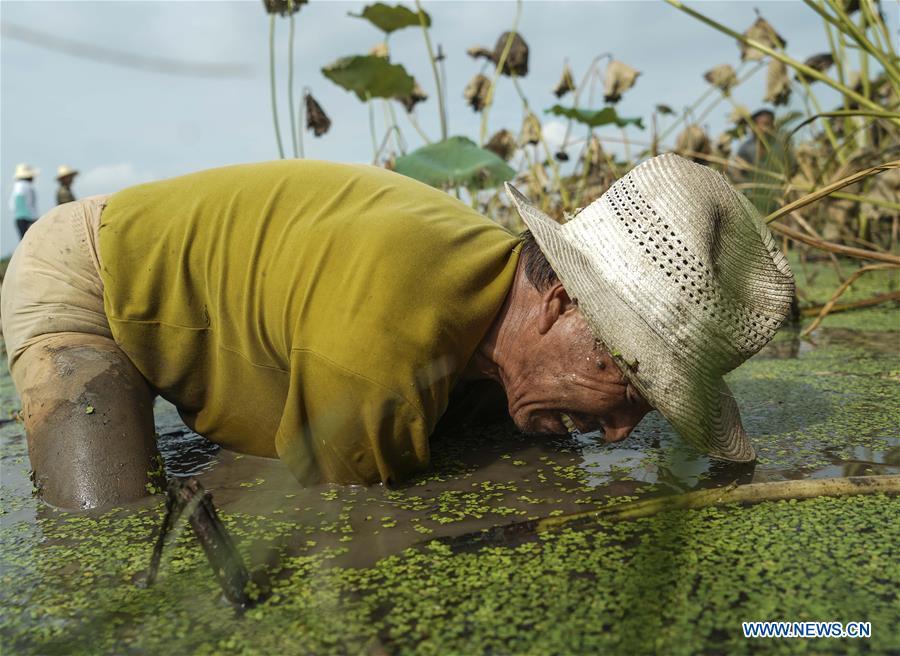
A worker digs lotus roots in Wudang Village of Jiangxia District in Wuhan, central China's Hubei Province, Sept. 18, 2018. In Hubei Province, this year's autumn harvest of lotus roots is underway. Stooping down in waist-deep ponds with feet submerged in mud, each worker holds a high-pressure water gun in one hand and grope for ripe lotus roots with another. The lotus root is one of the most widely used aquatic vegetables in Chinese cooking. The total cultivation area of lotus roots in China is estimated between 3,300 and 4,000 square kilometers, making the country the largest lotus root producer in the world. In recent years, agricultural researchers in Hubei Province have cultivated and promoted new varieties of lotus roots to offer alternatives to producers and customers. (Xinhua/Yin Gang)
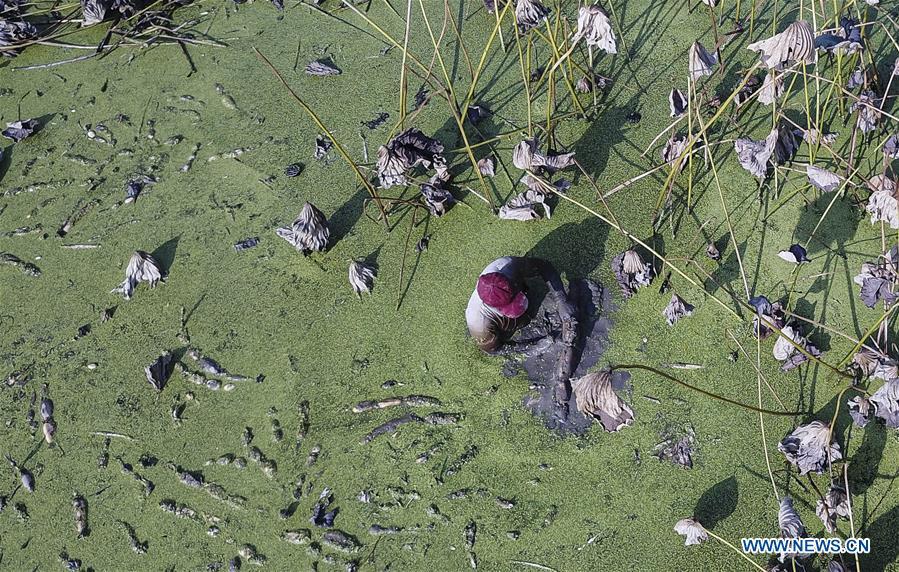
In this aerial photo taken on Sept. 18, 2018, a worker digs lotus roots in Wudang Village of Jiangxia District in Wuhan, central China's Hubei Province. In Hubei Province, this year's autumn harvest of lotus roots is underway. Stooping down in waist-deep ponds with feet submerged in mud, each worker holds a high-pressure water gun in one hand and grope for ripe lotus roots with another. The lotus root is one of the most widely used aquatic vegetables in Chinese cooking. The total cultivation area of lotus roots in China is estimated between 3,300 and 4,000 square kilometers, making the country the largest lotus root producer in the world. In recent years, agricultural researchers in Hubei Province have cultivated and promoted new varieties of lotus roots to offer alternatives to producers and customers. (Xinhua/Yin Gang)
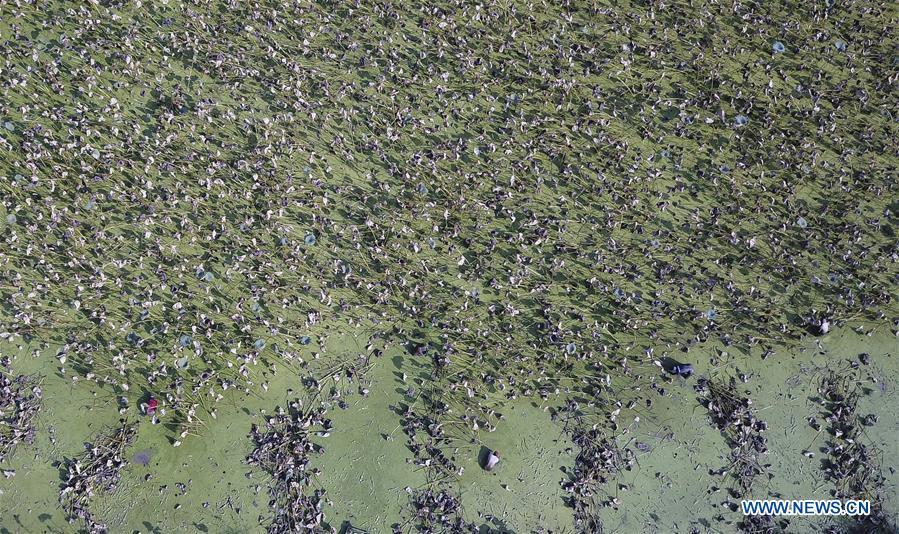
In this aerial photo taken on Sept. 18, 2018, workers dig lotus roots in Wudang Village of Jiangxia District in Wuhan, central China's Hubei Province. In Hubei Province, this year's autumn harvest of lotus roots is underway. Stooping down in waist-deep ponds with feet submerged in mud, each worker holds a high-pressure water gun in one hand and grope for ripe lotus roots with another. The lotus root is one of the most widely used aquatic vegetables in Chinese cooking. The total cultivation area of lotus roots in China is estimated between 3,300 and 4,000 square kilometers, making the country the largest lotus root producer in the world. In recent years, agricultural researchers in Hubei Province have cultivated and promoted new varieties of lotus roots to offer alternatives to producers and customers. (Xinhua/Yin Gang)
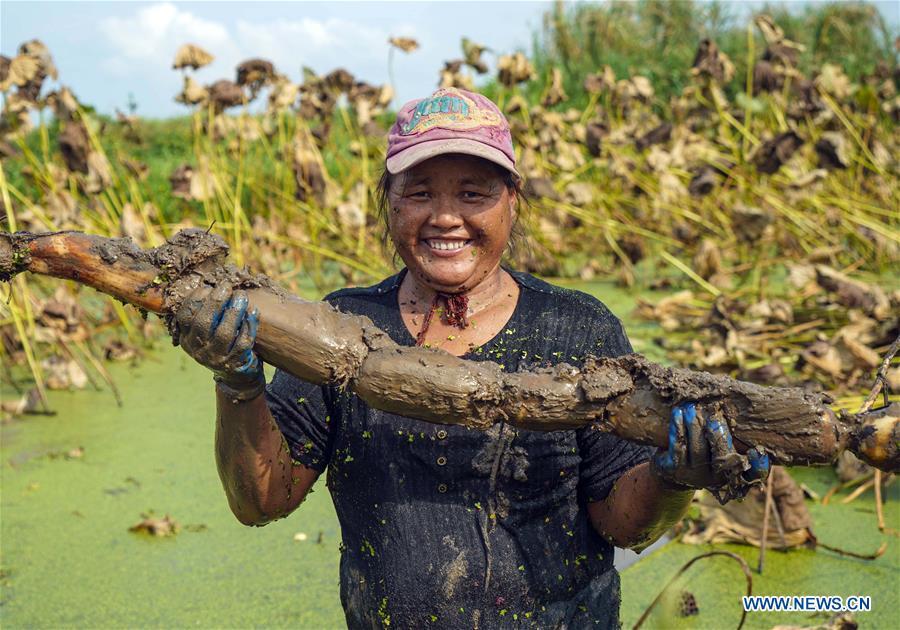
A worker shows a lotus root she dug up in Wudang Village of Jiangxia District in Wuhan, central China's Hubei Province, Sept. 18, 2018. In Hubei Province, this year's autumn harvest of lotus roots is underway. Stooping down in waist-deep ponds with feet submerged in mud, each worker holds a high-pressure water gun in one hand and grope for ripe lotus roots with another. The lotus root is one of the most widely used aquatic vegetables in Chinese cooking. The total cultivation area of lotus roots in China is estimated between 3,300 and 4,000 square kilometers, making the country the largest lotus root producer in the world. In recent years, agricultural researchers in Hubei Province have cultivated and promoted new varieties of lotus roots to offer alternatives to producers and customers. (Xinhua/Yin Gang)
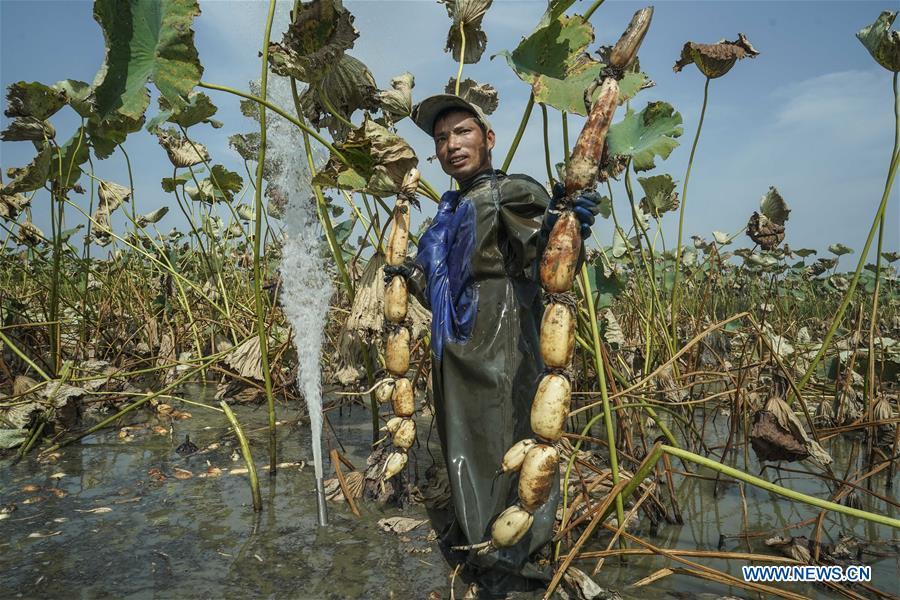
A worker shows lotus roots he dug up in Lihua Village of Chenhu Township in Hanchuan, central China's Hubei Province, Sept. 19, 2018. In Hubei Province, this year's autumn harvest of lotus roots is underway. Stooping down in waist-deep ponds with feet submerged in mud, each worker holds a high-pressure water gun in one hand and grope for ripe lotus roots with another. The lotus root is one of the most widely used aquatic vegetables in Chinese cooking. The total cultivation area of lotus roots in China is estimated between 3,300 and 4,000 square kilometers, making the country the largest lotus root producer in the world. In recent years, agricultural researchers in Hubei Province have cultivated and promoted new varieties of lotus roots to offer alternatives to producers and customers. (Xinhua/Yin Gang)











